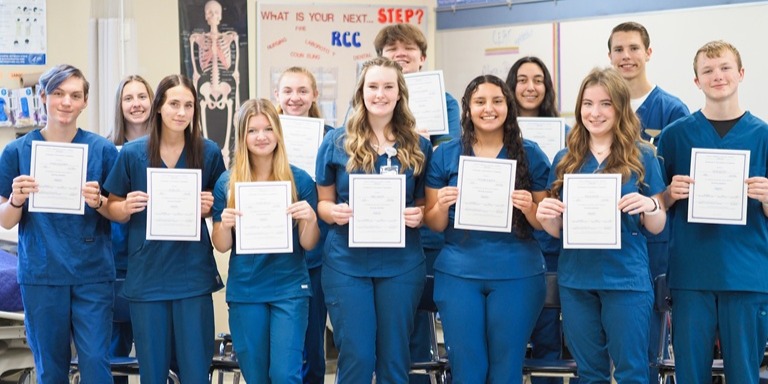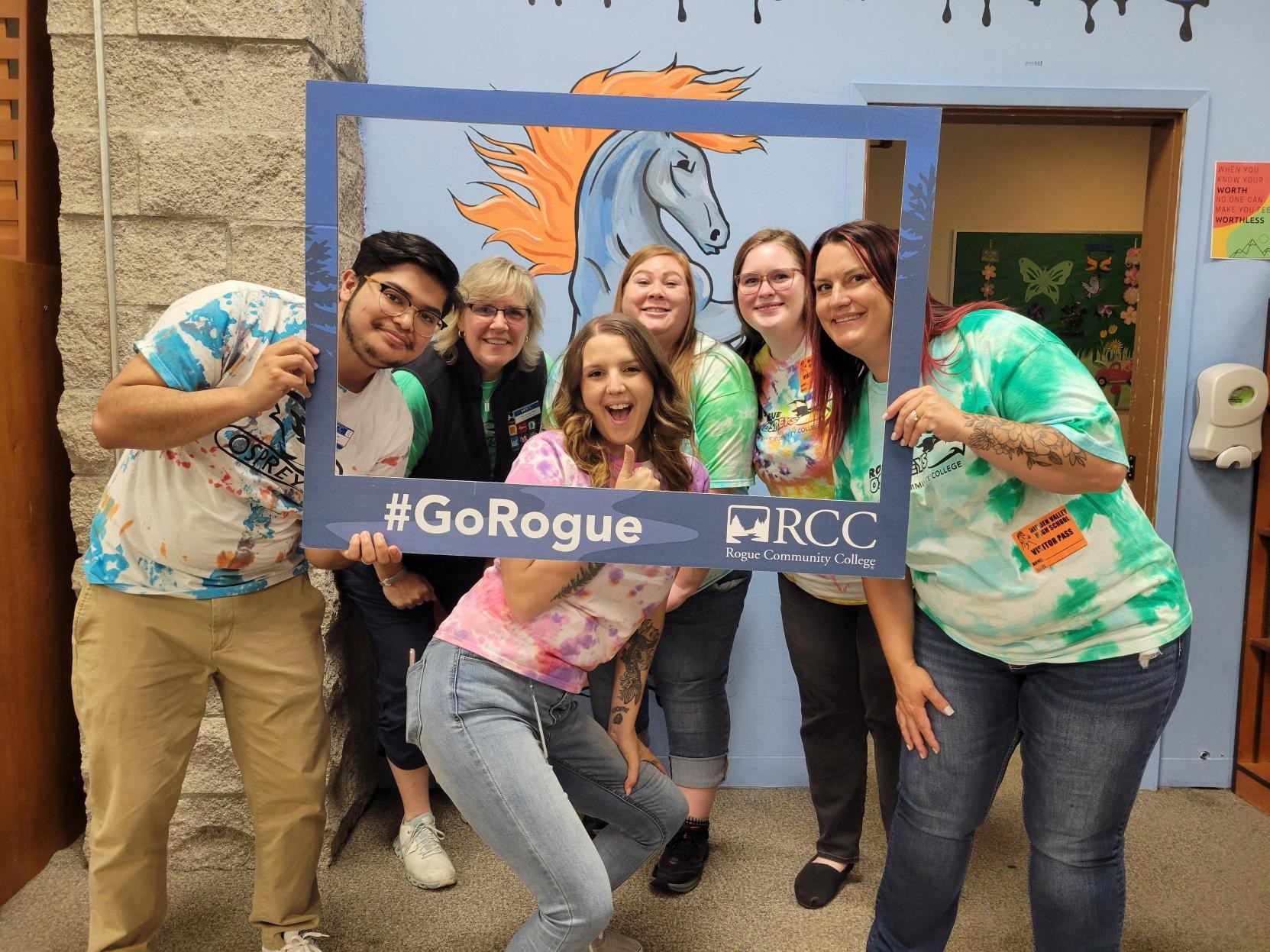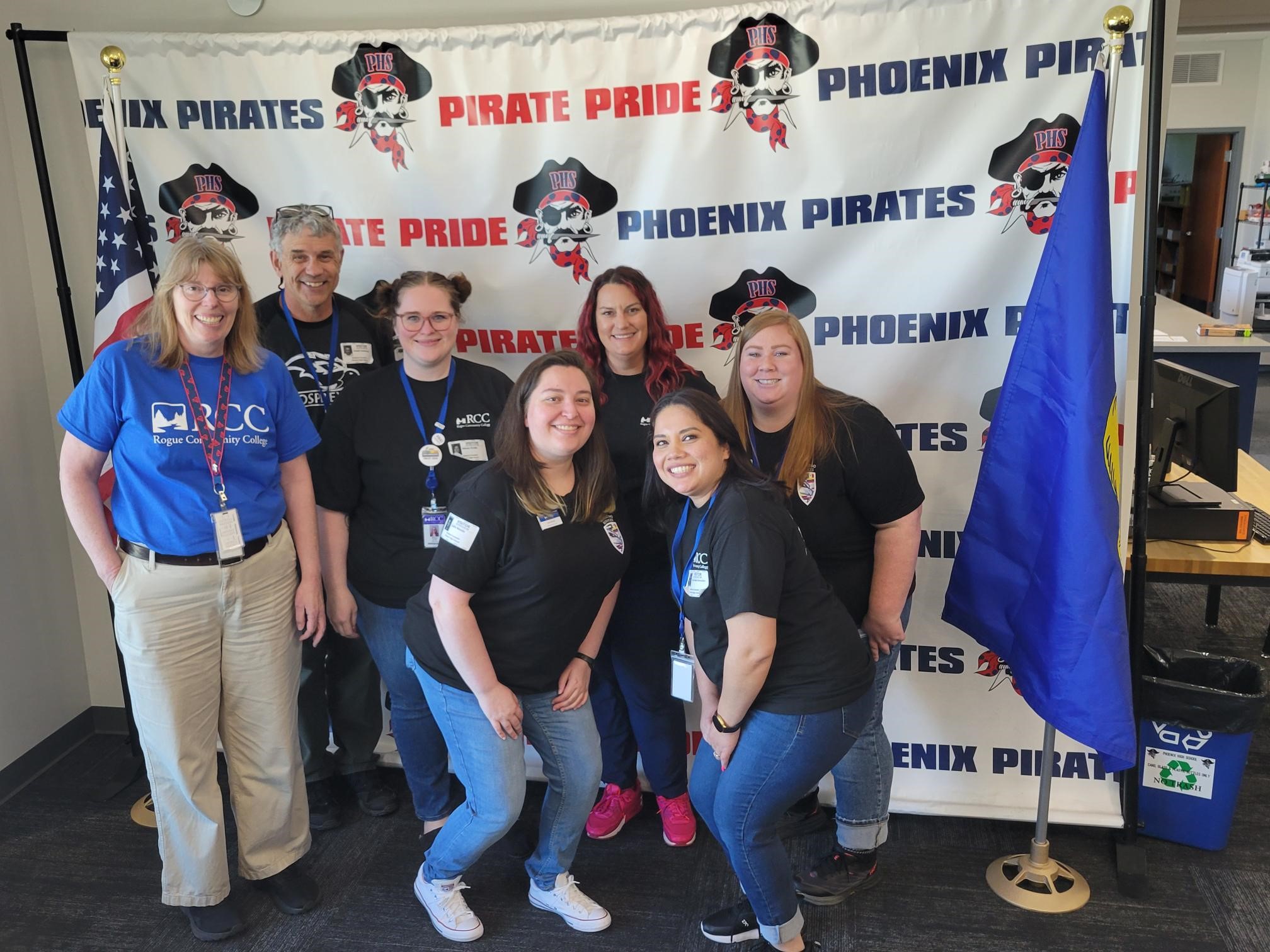Rogue Community College: Strategic Enrollment Management Meets Institutional Planning

In July 2022, Rogue Community College’s (RCC) new President, Dr. Randy Weber, energized the college with an initiative to stabilize enrollment. This was identified as the first of five institutional priorities. Leveraging his expertise in strategic enrollment management (SEM), Weber, in collaboration with the newly appointed Dean of Enrollment Management, spearheaded a strategic shift. This transition moved the college from a narrow focus on recruitment and new students to a more comprehensive approach, embedding American Association of Collegiate Registrars and Admissions Officers SEM fundamentals into smaller, actionable plans aligned with institutional goals, thereby creating a mini SEM plan tailored to enrollment demographics. According to Weber, "Strategic enrollment management is not just about numbers; it's about ensuring every part of the college community is aligned, engaged, and working toward a shared vision. It was important that our enrollment goals aligned with institutional strategic planning."
From 2016-2017 to 2021-2022, RCC enrollment dropped from over 16,000 students to less than 8,000 students (Rogue Community College, 2025), marking one of the steepest enrollment declines among Oregon’s community colleges. The decline was attributed to COVID-19, a local wildfire, and a failed student information system implementation. In response, RCC emphasized leadership-supported goals, cultural alignment, and phased implementation to combat initiative fatigue, prioritizing practical steps over a full-scale SEM rollout to adapt swiftly to enrollment challenges. The Enrollment Management team leveraged the president’s charge as its first core concept of SEM, to establish clear goals with leadership support.
Establishing a High School Enrollment Taskforce
High school enrollment was identified as crucial for achieving enrollment goals. To support this, RCC formed a High School Enrollment Taskforce with three committee chairs—deans over enrollment management, workforce development, and curriculum—and representatives from admissions, advising, high school partnerships, and TRiO-ETS. The taskforce prioritized collaboration with key partners who had the energy, authority, and influence to drive change. As part of their work to develop specific goals and strategies within a mini SEM plan, they began with an environmental scan to evaluate the college’s reputation, identify barriers, strengthen relationships with local high schools, and address challenges effectively.
Data-Driven Storytelling
Data was used to tell a story, allowing the taskforce to develop measurable goals and foster accountability, and creating opportunities to celebrate successes. The number of high school students earning college credit through RCC decreased by 54.6 percent between 2018-2019 and 2021-2022 (Rogue Community College, 2024). An RCC Institutional Research report also revealed a significant attainment gap for Hispanic students earning RCC early college credits while in high school. At one local high school, Hispanic students were disproportionately underenrolled by 14 percent compared to the student body as a whole (Rogue Community College 2023, 2024). This highlighted the need to target specific schools and strengthen partnerships to improve access. In addition, local and statewide data revealed areas for improvement. For instance, Oregon’s college enrollment rate for graduating seniors was 49.6 percent compared to the national median of 59.65 percent (National Center for Higher Education Management Systems, 2022), and RCC’s dual credit enrollment was 3 percent below the state average (Higher Education Coordinating Commission, n.d.). Expanding dual credit offerings, increasing early college access, launching additional workforce training cohorts, and prioritizing greater participation among Hispanic students were key priorities.
Setting Clear and Measurable Goals for Institutional Impact
The Enrollment Management team developed three-year objectives using metrics such as headcount, full-time equivalent, and percentages, where applicable. As an initial phase, the team focused on gaining a deeper understanding of enrollment patterns and how various metrics were influenced by collegewide factors, including enrollment growth, partnerships with high schools, and academic department offerings.
The mini SEM plan laid the foundation for updating key performance indicator (KPI) metrics in RCC’s mission fulfillment report and integrated the established SEM goals into the KPIs, highlighting the alignment between tactical initiatives and institutional priorities. The integration of strategic enrollment management and institutional planning remains fluid, fostering seamless goal creation and alignment. Since the SEM plan was developed, adult learners, university transfer matriculation, and Hispanic enrollment have also been integrated into KPIs, and new data-driven strategies are being considered for mini SEM plans.
To ensure that the goals remained relevant and prioritized, RCC's Institutional Research department developed Power BI dashboards to track high school enrollment metrics, helping the team monitor progress against benchmarks and guide strategic adjustments. These dashboards were designed to be visually accessible and easy for the college community to interpret.


Students from Hidden Valley and Phoenix High Schools at RCC High School Enrollment Days
Most Successful Strategies
RCC implemented several innovative strategies to enhance high school enrollment, achieving significant progress. These strategies included:
High School Enrollment Days
RCC hosted focused High School Enrollment Days, resulting in 400 graduating seniors registering for 3,764 fall 2024 term credits within 10 days. The events streamlined the registration process and provided students and families with personalized support. This dramatic result in such a short period of time was a win for frontline staff, reinforcing their demonstrated abilities. Grant Innis, previous College and Career Advocate and Oregon Aspire Coordinator, North Valley High School, said, “High school registration days are extremely helpful to students because they can have all of their questions and concerns addressed while getting personalized support through each step of the registration process.”
Leveraging Tuition Discounts
RCC implemented a 35 percent tuition discount for high school students taking RCC classes taught by RCC faculty, either online or on-campus. High schools cover the cost of tuition, making higher education more accessible and affordable for students. This initiative encouraged high schools to partner with RCC, allowing students to earn early college credits during the regular school year. Additionally, RCC offered summer tuition waivers for career and technical education classes, further strengthening high school partnerships and expanding opportunities for student success.
Customized Offerings for High Schools
RCC partnered with a local rural district without Friday classes to offer college courses and onsite workforce training aligned with student schedules, strengthening community ties and providing valuable career-focused opportunities. These Friday offerings grow annually. Juliet Long, RCC’s Vice President, Student Learning and Success, noted,
I’m passionate about creating opportunities for high school students to access college education, especially for those who may face barriers like transportation or scheduling. Thanks to the adjustments our departments have made, more students now have the chance to participate and take meaningful steps toward accessing higher education.
In addition, RCC expanded its workforce training programs with local high schools, including Nursing Assistant (CNA) and Phlebotomy, growing from just three trainings the previous year to 15 cohorts in 2023-2024. These cohort-based trainings equip high school students with workforce-ready skills and stackable credentials.
Innovation Funds
RCC’s commitment to innovation is evident through Innovation Microgrants. All full-time employees have an opportunity to apply for funding to support innovative projects via internal grants aimed at cultivating compelling proof of concepts aligned with institutional goals. One key strategy was to secure a grant and establish dedicated staffing for High School Partnerships, with two staff members funded for three years. These team members have played a critical role in strengthening connections with local schools and supporting student enrollment efforts, and their impact has been widely recognized. Rob Cowden, College, Career and Workforce Coordinator at Eagle Point High School, stated, "Through a continued commitment . . . to the positions, programs, and work of many, last year [was] productive and beneficial to all parties involved." Looking ahead, these positions are slated to transition into general funding, ensuring long-term sustainability. Additionally, RCC created a new Assistant Director of High School Partnerships position to continue leading this important work and further enhance collaboration with regional high schools.
Credit by Examination
One high school partnered with RCC to help students earn up to 20 college credits for Spanish proficiency through the Avant STAMP 4S exam. In just one month, RCC created a streamlined process that immediately benefited 43 students before graduation. The program highlights a commitment to student success and a willingness to quickly respond and adapt to the changing needs of our students. The intention is to expand this offering and provide testing opportunities at RCC for adult learners.
Hispanic Student Programming
RCC’s Hispanic student programming has been reestablished and revitalized. For instance, the Abriendo Puertas leadership conference empowered 14 high school students to take on leadership roles by co-hosting the conference they envisioned with the college. The students presented culturally relevant sessions and identified college knowledge and resources needed for informed post-high school decision-making. The program was fully funded and supported by RCC.
Targeted Initiative Meets Enrollment Needs
RCC’s mini SEM plan exemplifies the power of strategic, targeted enrollment initiatives. By focusing on a specific population, RCC addressed immediate enrollment challenges while laying the groundwork for sustained growth and success and introduced SEM fundamentals to the college. This approach underscores the value of aligning SEM with institutional priorities, fostering cultural readiness, and using data to drive decision-making. RCC’s experience serves as a model for other colleges seeking to implement SEM strategies that are both impactful and achievable, especially in an environment that has not formally established strategic enrollment management.
References
Higher Education Coordinating Commission. (n.d.). Student full-time equivalent (FTE) report. Oregon Community Colleges Data Mart.
National Center for Higher Education Management Systems. (2022). Oregon higher education landscape study.
Rogue Community College. (2023). Count & percentage of Hispanic/Latino students per school district in JaCo/JoCo (high school only) [Internal Report]. Office of Institutional Research.
Rogue Community College Office of Institutional Research. (2004, June). High school enrollment: Annual Trends: Early College Race/Ethnicy [Internal Power BI dashboard]. Rogue Community College.
Rogue Community College. (2004, June). High school enrollment: Accelerated learners (unduplicated) [Internal Power BI dashboard]. Office of Institutional Research.
Rogue Community College. (2025, January). Total FTE & headcount, annual headcount trend data [Internal Power BI dashboard Data 2.0]. Office of Institutional Research.
Lead image: One of three cohorts, these Grants Pass High School students are among 45 graduates of Rogue Community College's Nursing Assistant Program in 2023.
Nicole Sakraida is Dean, Enrollment Management, at Rogue Community College in Grants Pass, Oregon.
Opinions expressed in Member Spotlight are those of the author(s) and do not necessarily reflect those of the League for Innovation in the Community College










